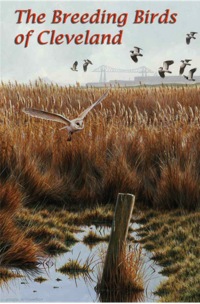The Breeding Birds of Cleveland by Graeme Joynt, Ted Parker and Vic Fairbrother

The county of Cleveland only lasted 22 years, 1974–1996, but has been immortalised in birding circles by the activities of the Teesmouth Bird Club, established in 1960. The Breeding Birds of Cleveland is an atlas of breeding bird distribution based on the results of an 8-year survey undertaken by members of the TBC between 1999 and 2006.
The book contains comprehensive accounts of the 127 species of birds found breeding in Cleveland during the survey period. In addition there are short accounts of a further 33 species that have bred in the county both historically and in recent times.
The text is accompanied by over 100 colour photographs of many of the commoner birds found nesting in Cleveland. The species accounts are also embellished with originally produced distribution maps enabling the occurrence of each species to be related to factors such as habitat and topography.
In addition to the species accounts there are also informative chapters on the Environment, Geology and Landscape, Climate and Land Use of the survey area. The county of Cleveland contains at its heart the internationally important Teesmouth Ramsar site and National Nature Reserve. The RSPB are currently establishing a new reserve at Saltholme Pools on the North Tees Marshes. To the south lies the North York Moors Special Area of Conservation which protects unique habitats as well as key bird species such as Golden Plover.
The commonest breeding bird in Cleveland is the House Sparrow, which is fitting as the county is home to Dennis Summers-Smith, author of the sparrow monographs. The species accounts highlight the relative recent success of some species such as Peregrine, Little Ringed Plover and Common Tern. In contrast others appear to be in terminal decline. These include Hawfinch, Corn Bunting and Spotted Flycatcher. The county has a strong population of Song Thrushes, but Lesser Spotted Woodpecker hangs on in just two localities. The latest addition to the breeding list is the Avocet, with two pairs breeding at Teesmouth in 2008. The book also reveals that the controversial Ring-necked Parakeet has recently colonised parks in Middlesbrough and Hartlepool.
Importantly, this publication marks a shift in the attitudes of modern day birdwatchers to their hobby. Many who started out in the 70s and 80s were gripped by the desire to pursue the rare and unusual. This period in birdwatching history culminated in the mass gatherings in autumn on the Scilly Isles and the formation of both national and regional birdlines in the mid- to late 1980s.
Clubs like the TBC produce lavish reports documenting the passage of migrant birds to the region in detail. However, looking back through the county reports it is hard to find details of the status of breeding populations of birds apart from the occasional generalisation.
Luckily the TBC recognised this fundamental gap in knowledge of their local birds and instigated a survey. This desire matched neatly the BTO's efforts to simplify bird census techniques and make them more accessible to general birdwatchers.
Cleveland now has a baseline database on which to build further knowledge. Tetrad methodology is a broad-brush approach and from the accounts it is apparent that some species have been under-recorded. The TBC can build on this and focus future efforts on single-species surveys that can yield yet more significant data. Moreover, it can galvanize active field birders to discover more about their back-garden birds and truly make a positive impact on bird conservation. Order this book now and be inspired!
Published 2008 by Teesmouth Bird Club.
Hardback. Full colour, 428 pp.
RRP £25, ISBN 978 0 905 482 01 9.


